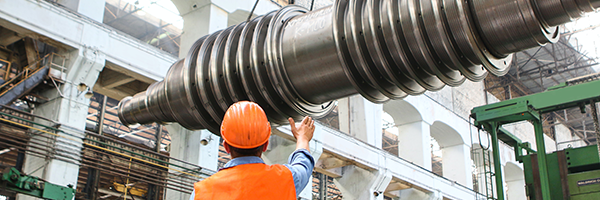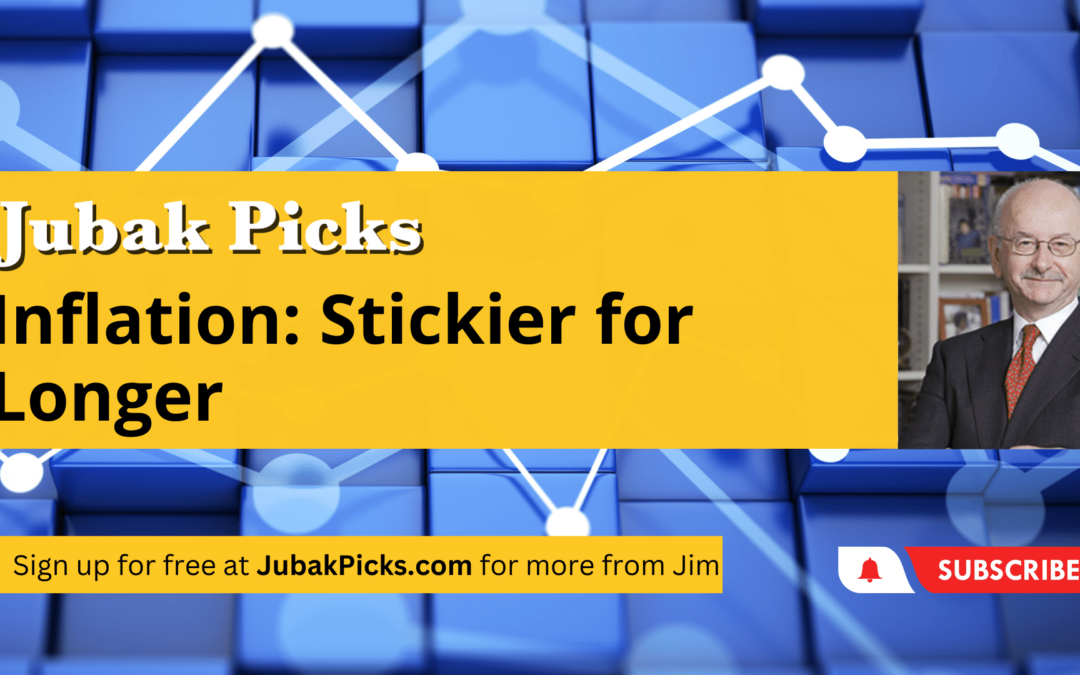
February 16, 2024 | Daily JAM, Morning Briefing, Short Term |
The Labor Department reported Friday that its producer price index—which tracks inflation before it reaches consumers—rose 0.3% from December to January. The index had dropped -0.1% in December. Measured year over year, producer prices rose by 0.9% in January. But the month to month increase in producer prices and at a higher month to month rate is the latest sign that getting inflation the “last mile” down to the Federal Reserve’s 2% target rate is going to be harder and take longer than expected.

February 15, 2024 | Daily JAM, Morning Briefing, Short Term |
Remember all that fear talk after CPI headline inflation came in at a 3.1% annual rate in January versus the projected 2.9%? Well, that lasted all of a day.

February 15, 2024 | Daily JAM, Mid Term, Videos |
Today’s video is Inflation: Stickier for Longer. The market is now beginning to suspect that the Fed has a last mile problem. The CPI numbers from Tuesday weren’t terrible, but they weren’t as low as the market hoped. Headline inflation was at 3.1% annual rate and core inflation was 3.9%–markedly better than the past high of 9%, but not quite hitting the 2.9% for headline inflation that economists were looking for. The miss has finished a flip in sentiment about a March rate cut. The CME FedWatch poll in January had March rate cut odds at 90% likely, now, just a month later, the odds of no action are up to nearly 90%. Only about a third of investors believe there will be a rate cut in May with odds of no action up to 61%. The calendar is being pushed out to June or July for cuts from the Fed. This has resulted in bond yields going back up, around 4.3% on the ten year Treasury, and stocks going down a bit. There is a hope out there that the CPI numbers were a January blip, but if you look at the breakdown of the inflation numbers, it seems clear that inflation is just plain sticky. The Atlanta Federal Reserve Bank index that looks at the sectors that tend to be sticky and how much they’re influencing the overall inflation rate shows that prices in those sticky inflation categories have stopped and that they are a major factor keeping inflation higher than hoped. . Additionally, while there’s been a big drop in goods prices, the price of services has not gone down nearly as much. The super core inflicts number, which looks a prices in the services sector after taking out the cost of shelter has stalled. All this to say, we’ve got good evidence that this last mile from 3% to 2% on inflation could take a while.

February 13, 2024 | Daily JAM, Morning Briefing, Short Term |
Headline, all-items Consumer Price Index (CPI) inflation fell again in January, but not by as much as economists had projected before this morning’s report from the Bureau of Labor Statistics. In January prices rose at 3.1% year-over-year. That’s a slower increase than the 3.4% annual rate notched in December. But economist had projected that inflation would dip to a 2.9% annual rate. And stocks dropped on the disappointment.

February 11, 2024 | Daily JAM, Morning Briefing |
I expect another downward move for inflation when the January Consumer Price Index (CPI) is reported on Tuesday. Economists surveyed by Bloomberg expect that the core consumer price index, which excludes move volatile food and fuel prices, will show a year over year rate of increase of 3.7% in January. That would be the slowest year-over-year increase since April 2021.

February 1, 2024 | Daily JAM, Morning Briefing, Short Term |
A day before the January jobs report that everyone on Wall Street is awaiting with bated breath two other reports painted a conflicting picture of how the U.S. economy is doing. And just in case you’ve forgotten the strength and speed of economic growth is what will determine when the Federal Reserve first cuts interest rates and how many cuts investors will see in 2024.

January 25, 2024 | Daily JAM, Morning Briefing, Short Term |
U.S. Gross Domestic Product (GDP) grew at an annual 3.3% rate in the fourth quarter, the Commerce Department announced today. That was down from the 4.9% annual growth rate in the third quarter, but substantially above the 2.0% rate expected by economists. For the full year, the US.economy expend at a 3.1% rate.

January 11, 2024 | Daily JAM, Short Term |
Federal Reserve officials were out with one message today: The slightly higher-than-expected CPI inflation number for December/the slightly-slower-than-expected slowdown in CPI inflation argues that there’s still more work to be done on bringing inflation down to the Fed’s 2% target. And that talk of a rate cut in March is premature.

December 16, 2023 | Daily JAM |
I expect the Federal Reserve to continue to try talking back some of the enthusiasm that greeted its December 13 meeting and the release of a new set of Dot Plot projections showing that the median forecast of staff and policy makers at the U.S. central bank called for three interest rate cuts in 2024.

December 12, 2023 | Daily JAM, Morning Briefing |
If you follow the headline numbers (what’s known as All Urban Consumers) for the Consumer Price Index (CPI), you’d say, “See inflation continues to fall; the Federal Reserve will cut rates quickly in 2024.” But you’d be following the wrong CPI number.

December 5, 2023 | Daily JAM, Morning Briefing |
In October job openings in the U.S. economy fell to the lowest level since early 2021. I’m sure that make the Federal Reserve happy ahead of its December 13 meeting on interest rates. The Fed has been looking for sign that the labor market is cooling off. And it’s getting plenty of them recently. (And will probably get more on Thursday and Friday when the government reports new claims for unemployment and the jobs situation for November.) The question, for those few of us who still see a recession in 2024 as a danger, is When is slower too slow? A slowing labor market means fewer gains to average weekly earnings. Which translates into either less consumer spending, or consumer spending fueled by more debt.

November 30, 2023 | Morning Briefing |
The Dow Jones Industrial average soared 1.47% today–or 520 points–as the Federal Reserve’s favorite inflation measure showed that inflation continued to fall in October. The inflation news, the market decided, was exceedingly good news for the old economy stocks in the Dow 30. In contrast, the new economy stocks in the NASDAQ Composite fell 0.23% on the day.











